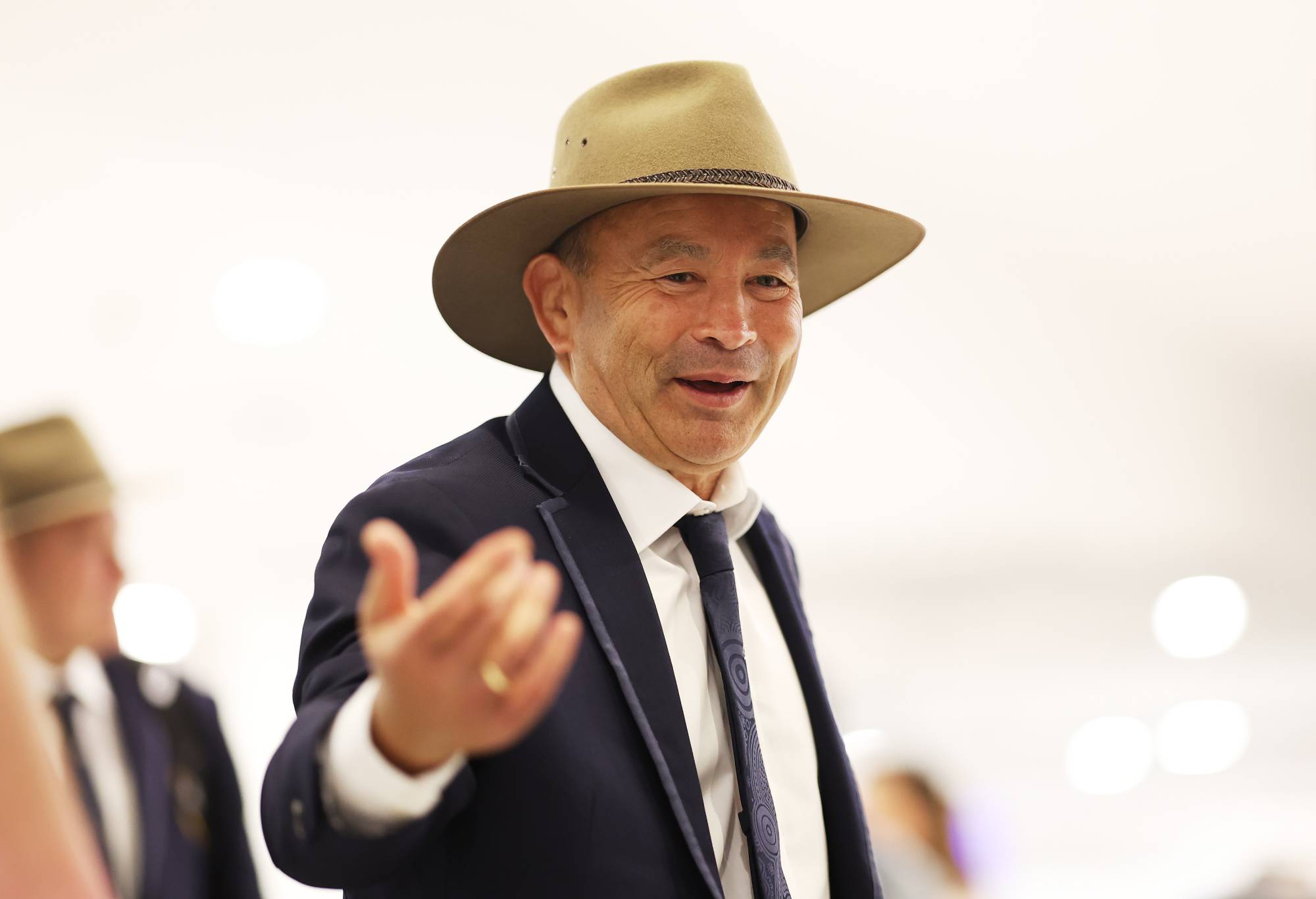The Roar's Super Rugby expert tips and predictions, Round 12: The game of the season headlines a round of blockbusters
It's blockbuster week in Super Rugby Pacific for Round 12 - on both sides of the Tasman. In Australia, we have the Waratahs and…
International Rugby is a game of pressure, how you exert it and how you prevent it.
The best rugby teams are like pythons, they squeeze their prey until they are so weak there is no resistance to being swallowed whole. There are some ruthless predators who are coming to Rugby World Cup 2023.
When teams score and concede points determines how much pressure they can put their opposition under, and therefore whether they can dictate a game. The best teams in this World Cup cycle have consistently been better at scoring points in ways that can pressure oppositions, with the start and end of matches being the nexus they build gameplans around.
The top nine sides in world rugby have played 131 matches against each other in this cycle with just a handful of friendlies to go before the World Cup kicks off. An analysis of the scoring times from these 131 games reveals some striking patterns.

(Photo by Peter Meecham/Getty Images)
The three best teams in this World Cup cycle have been Ireland, France and New Zealand. These teams are the best in the world at what might be referred to as ‘psychological scoring’. These teams are the best at scoring points in the first 10 minutes of matches, all averaging above 3 points in that period. They are adept at dominating early, quickly forcing opponents onto the back foot in having to play from behind.
Early scoring is then followed by a lull with fewer points scored between minutes 10 and 30. Finally, in the 10 minutes just before half-time there is another spurt, with these teams again leading the world in points. Consequently, this trio often control the momentum leading into the half-time break – shaking their opponents’ morale.
New Zealand exemplified this first half approach in Bledisloe One, with Scott Barrett’s early try after just five minutes of play. Despite Australia getting back ahead, two All Black tries in the 10 minutes preceding half-time meant that although Australia felt in control for much of the first period, they faced the weight of scoreboard pressure, trailing 19-7 heading into the rooms.
Leveraging this opening and closing first half onslaught, the top teams tend toward different scoring rhythms in the second half. France have been reliant on their first half explosion, as they score far less in second halves, instead allowing Antoine Dupont and Thomas Ramos’ kicking game to ensure they do enough to win.
Ireland is a more attritional side. They size teams up in the first half before being the best at striking at the start of the second. Points early in the second half enable them to grind teams down towards the back end of games as they further dominate the scoreboard.

(Photo by David Rogers/Getty Images)
South Africa, the outlier in the top four, actually tend to start games poorly, scoring comparatively few points in the beginning of games. This however, changes with the introduction of their ‘bomb squad’. South Africa exert most of their pressure between the 50- and 60-minute mark of games.
This is the second most dominant passage of time for any of the Top 9 teams (only behind France’s 30-40 minutes) with their average point differential for this time being +3.2. South Africa tires opponents, grinding them down until their opposition is unprepared for their fresh legs.
Finally, New Zealand builds with the first 10 minutes after half time being their statistically least fruitful. However, as every Wallabies fan knows, the All Blacks have a reputation for punishing teams in the last 20 minutes. Bledisloe Two exemplified just how painful this could be for opponents. Despite Australia doing everything correctly to get points early and prevent the All Blacks from scoring, they came storming home.
The Wallabies went from a 17-3 score line at half-time to a 20-3 points deficit in the second half and a narrow loss. The All Blacks are the true python. Striking quickly when they can, but most importantly wearing down their opponents so there is nothing they can do at the end of matches.
Scotland, who are currently 5th in the world, epitomises the opposite approach to these other top teams. Firstly, they average far fewer total points at just 20.26 points per game, well behind the next highest scoring team Ireland, at 24.85.

(Photo by Silvia Lore/Getty Images)
The strangest feature of Scotland’s points scoring is their scoring spurts. While the other four teams focus on clinical starts and ends of halves, Scotland ranks last of the top nine teams in points scored in the first 10 minutes of the match, and the last 10 minutes of both halves. Moreover, Scotland only averaged 0.88 points in the first 10 minutes of their matches in the current cycle.
Compare this to the French approach, who average more than a try per first 10 minutes (5.30). Scotland instead dominate the middle of games. On average, Scotland scores just 7.26 points in the 40 minutes that bookend both halves and average 13 points in the mid-game periods. It is almost comical how disparate this is from the other top teams’ play styles, with every other country scoring more in the bookends than the middles.
While the best teams prefer to exert pressure in the opening and closing of halves, Scotland totally dominate the middle of games, seemingly trying to just stay in touch at the end of halves. The net result is mainly effective, although uncomfortable for fans, as they chase down early deficits before attempting to hold leads to the final whistle.
Under Dave Rennie Australia was an attritional team, much like Ireland, with the grinding down of opponents leading to late and damaging barrages. This game plan was perhaps best illustrated in Dave Rennie’s last match in charge against Wales in 2022. Australia was dominated early in the match, with a 34-18 score line to Wales in the 60th minute, yet a 21-0 points spree in the final 20 minutes manufactured an Australian victory in Cardiff.
An emphasis on fitness and a wealth of talented attacking individuals underpins this approach. A late flurry in the first test of the year against England, and Bledisloe One lost to a controversial late try, highlighted that Australia could outlast the best teams and back their fitness in the final 20.
Yet, we also saw the problems with this late-game focus as Australia, despite scoring their expected points late, were unable to win games. 12 points in the final 20 minutes against Italy left the Wallabies 1-point short, 13 points in the final 30 against France meant that a single late French score delivered another 1-point loss. Rennie was clearly building something, but the boom-or-bust nature of chasing teams down cost him his job.
So, as Australia sits 0-4 under Eddie Jones, how Australia should play is a matter for debate. The Wallabies in their loss to Argentina showed some of that same Rennie comeback with 14 points in the final 10 minutes, though as it often did for Rennie, it was impressive but not enough. However, Eddie has a plan. Eddie knows the value in controlling how a game is played.

(Photo by Mark Metcalfe/Getty Images)
The Wallabies were never able to dictate the rhythm of play under Rennie because they were so rarely leading. In 32 games against Top 9 teams under Rennie the Wallabies scored a total of 55 points in the first 10 minutes.
In four games under Eddie Jones, Australia has scored 33 points. Manufacturing early points has always been a strength for Eddie, with weaknesses in other teams being exploited as quickly as possible through incredible opposition analysis and a love for cunning set plays.
This rate of 8.25 points in the first ten minutes per game eviscerates every other team in the world going into this World Cup cycle. France’s early potency is only able to generate 5.3 points per first 10 minutes. Ireland and New Zealand average just over 3 points in the span in this World Cup cycle, which makes the Wallabies’ output under Eddie even more notable.
Obviously, this early scoring has not immediately transferred into success, as the Wallabies have had significant teething problems with actually sustaining pressure in matches. This is not unexpected as the team has been trained to chase down others for the last three years.
However, if the Wallabies can become more comfortable with exerting pressure on teams at the World Cup, their Rennie designed late-game assault paired with Eddie’s early-game blitzkrieg make them a genuine prospect.
The Wallabies could always create pressure through Rennie’s strong finishes and now Eddie’s fast starts. Yet, their success at the Rugby World Cup will be determined by whether they can control games and choke opponents with these threats. If the Wallabies can learn to strangle teams, there is reason to believe they still could become Rugby’s apex predator.